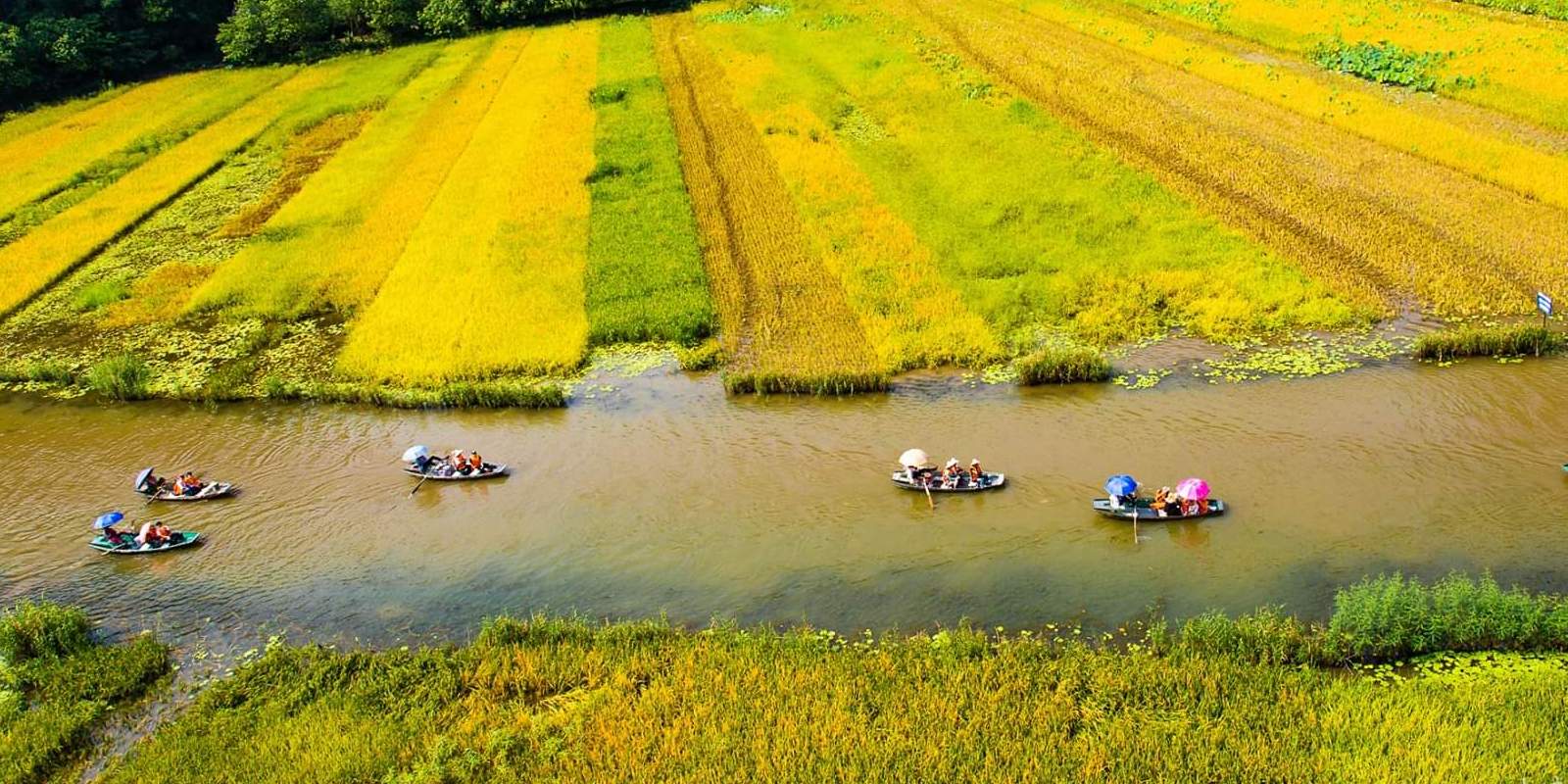
Vietnam Museums – Must see places in your Trip
Vietnamese history is far from straightforward. There have been many legends, many invasions, and many shifts, that’s why it’s helpful to have a hand in deciphering it all. Vietnam’s museums are the perfect starting point for any traveller looking to understand the destination better. Go deeper to understand a specific chapter of the country’s history, or to get to know a singular aspect of its colourful culture. Here is a list of excellent museums dedicated to the Vietnamese and their way of life.
Northern Vietnam
Vietnamese Women’s Museum
Not only accounting for half of the population, but women play an irreplaceable role in both families and society. Vietnam, which boasts such an amazingly rich culture, nails it in every way. Vietnam Women’s museum in Hanoi is a great place to provide all interesting information about these warm-hearted brave beautiful human beings.
Vietnamese Women’s Museum was built in 1987 with the mission of spreading the public knowledge of Vietnamese women and devoting to gender equality in Vietnam and it is being run by The Women’s Union of Vietnam which is known as one of the most dynamic organizations. Since its complete inauguration in 1995, it has been successfully displayed 25,000 artifacts, photos and items with regards to Vietnamese Women contemporary life and cultural customs; also chosen to hold a number of formal exhibitions such as Ao Dai, traditional dress of Vietnamese women or artworks about ethnic minorities.
Location: 36 Ly Thuong Kiet Street, Hang Bai ward, Hoan Kiem District, Hanoi
Opening hours: 8 a.m- 5 p.m
Entrance fee: 40,000 VND/adult and 10,000 VND/children below 16
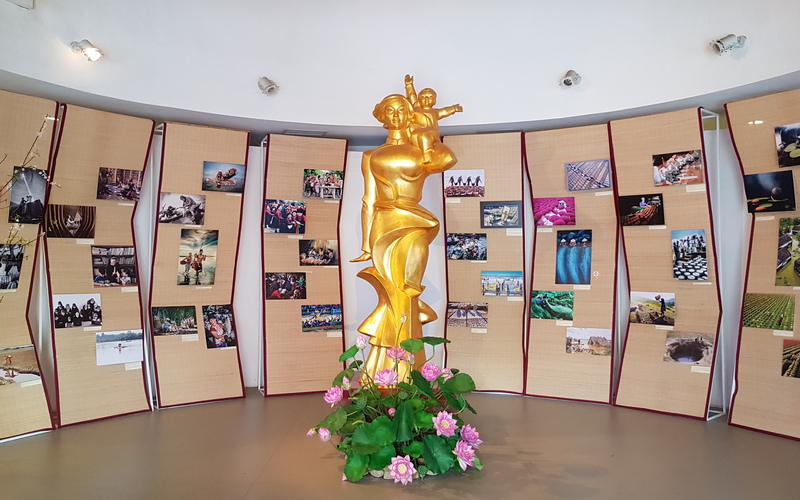
Vietnam Museum of Ethnology
Vietnam is a multi-ethnic country, which is composed of 54 ethnic groups. With a view to preserving and presenting the cultural heritages of these ethnic groups, the Vietnamese Government decided to establish a museum of ethnology in Hanoi. Hence, the today’s Vietnam Museum of Ethnology was constructed on the land of 9,500 square meters, around 8 kilometers from the city centre. The construction started at the end of 1987 and was completed in 1997.
The mission of the Museum is to collect, document, research, preserve and exhibit the cultural and historic patrimony of the nation’s different ethnic groups. In its future planning, the Museum intends to present the cultures and civilization of other countries in South-East Asia and in the region as well.
Location: Nguyen Van Huyen Street, Cau Giay District, Hanoi
Opening time: 08:30 a.m – 05:30 p.m) from Tuesday till Sunday (exept only Monday and the Lunar Tet Holiday)
Entrance fee: 40,000 VND/adult and 20,000 VND/children below 15
Tel: (84-4) 7562193 Fax: (84-4) 8360351
Email: vme18@vme.org.vn
Website: http://www.vme.org.vn
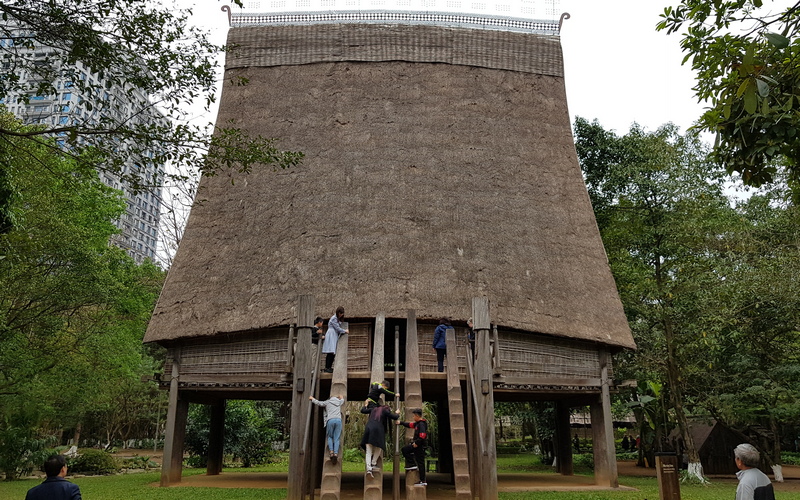
Vietnam National Fine Arts Museum
It has become a prime tourist destination, since the museum exhibits in great detail the history of fine arts in Vietnam displaying comprehensive collections with more than 2,000 items. This museum aims to be a cultural and educational institution. It is linked with the Ministry of Culture and Information responsible for restoring, conserving, and exhibiting contemporary artwork as well as ancient materials and objects in Vietnam. The museum is attracting a growing number of visitors both for its value in historical collections and the building’s artistic architecture. In 1930, the museum’s original structure was built and used as a boarding house for French girls in Indochina (the old name of the former French colony) while studying in Hanoi.
Entrance fee: 40,000VND
Opening time: 08:30 a.m – 05:30 p.m) from Tuesday till Sunday (exept only Monday and the Lunar Tet Holiday)
Location: 66 Nguyen Thai Hoc, Ba Dinh, Hanoi
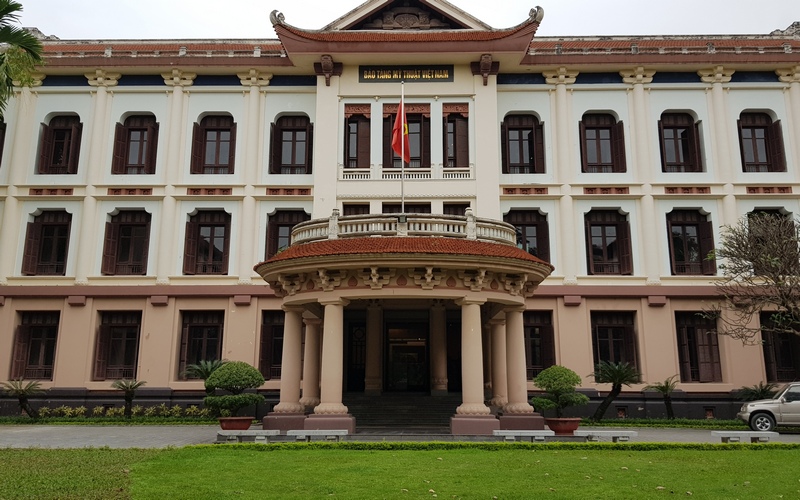
Hoa Lo Prison – Maison Centrale in Hanoi
Hoa Lo Prison (now it is called historic relic Hoa Lo Prison) is located at address 1 Hoa Lo Street, Hanoi. In the past, this land was a village specializing in making all kinds of casserole, portable earthen stove,…. so this place is called Hoa Lo village (Hoa Lo means “ fire earthen stove” in Vietnamese). When the French occupied Hanoi, this was moved to another place to get land to build courts and prisons. Because this prison was landed on Hoa Lo village, people called this place “Hoa Lo Prison”.
Hoa Lo Prison has an important role in French colonists in suppressing the antagonist of the colonial system. So they built this prison in a large area with strong and complex defense systems. The building process was not completed, but in 1899 the French had to use it immediately because they wanted to capture people fighting against them.
Location: 1 Hoa Lo Street, Hoan Kiem District, Hanoi
Opening hours: 8 a.m- 5 p.m
Entrance fee: 30,000 VND/adult and 10,000 VND/children below 15
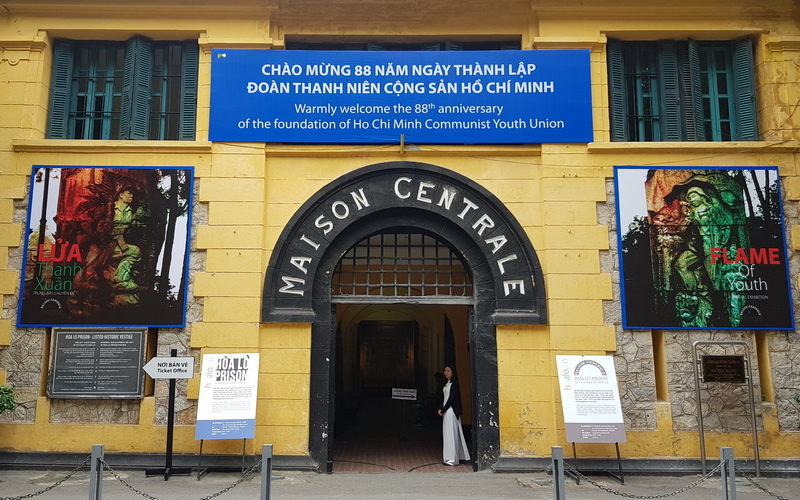
Central Vietnam
Cham Museum of Sculpture
Situated in a quiet area of Da Nang City, Cham Museum was built in 1915 according to the motifs of ancient Cham Architecture. At first it was named the Henry Parmenties Museum. The museum is officially known as the Museum of Champa Sculpture. The kingdom of Champa (or Lin-yi in Chinese records) controlled what is now south and central Vietnam from approximately 192 through 1697. The empire began to decline in the late 15th century, became a Vietnamese vassal state in 1697, and was finally dissolved in 1832. At present, the museum houses 297 stone and terracotta sculptural works made between the 7th and the 15th centuries. These are impressive works typical of the Cham culture.
Location: No.02, 2 Tháng 9 Street, Binh Hien ward, Hai Chau district, Da Nang city, Vietnam
Opening hours: 7 am – 5 pm
Entrance fee: 40.000 VND/adult
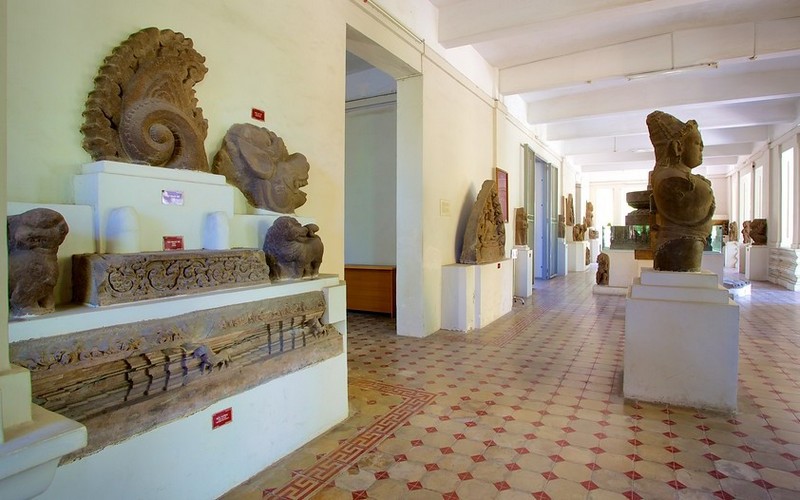
Oceanographic Museum in Nha Trang
Nha Trang Oceanography Institute is a research institute of marine flora and fauna lives which was founded in 1922. The Institute is located on a high and spacious land at No. 1, Cau Da, Nha Trang city, Khanh Hoa province. With 20,000 specimens and living species, the Oceanographic Museum of Nha Trang Oceanographic Institute is Southeast Asia’s largest marine specimen keeper. Thousands of sea creatures may be seen, and visitors can learn about marine fauna and Vietnam’s sovereignty over the Hoang Sa (Paracel) and Truong Sa (Spratly) archipelagos.
The Oceanographic Museum in Nha Trang is a cultural and historical tourist destination as well as a place for scientific study. Sea creature specimens were obtained from Vietnam, Cambodia, and nearby nations’ seas. Some of them, such as the dugong, are endangered. For several years, the museum and institute have been named one of the top ten most interesting cultural and historical tourist destinations in the world. The museum receives between 220,000 and 290,000 visitors each year.
Location: 1 Cau Da street, Nha Trang city
Opening hours: 6 a.m- 6 p.m
Entrance fee: 30,000 VND/adult
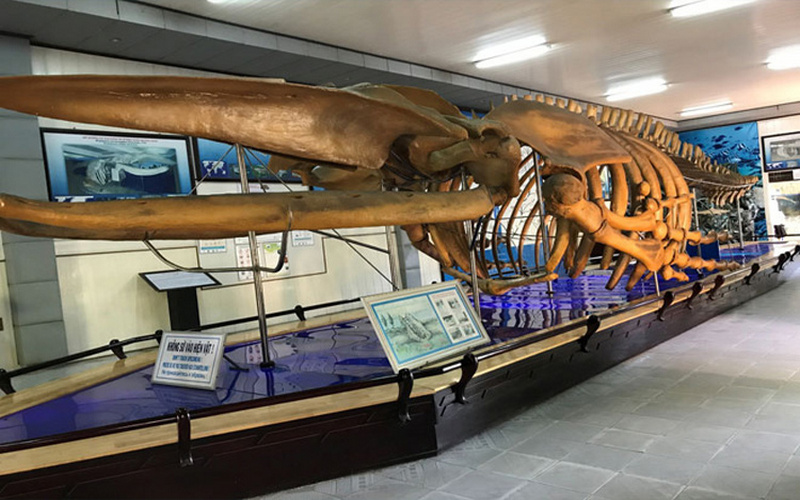
World Coffee Museum
A global coffee museum has emerged as the latest popular tourist attraction in Buon Ma Thuot City, representing an interesting suggestion for tourists keen to explore the history of the global coffee industry and take in unique architecture.
It is a 100-acre property in the central highland province of Dak Lak that boasts spectacular views and a museum like no other. The building, engulfed in curved archways, is inspired by long-houses, a local architectural style of the Ede, an ethnic minority group in the country. Inside, the museum—in partnership with Germany’s Kaffeemuseum Burg (Museum of Coffee)—displays more than 10,000 coffee artifacts from around the world. Visitors are encouraged to smell, taste, and touch coffee beans as they learn about the history and migratory patterns of the drink. Some of the earliest objects come from Vietnam, showcasing tools and instruments used by farmers to harvest the bean before its industrialization.
Location: Nguyen Dinh Chieu, Tan Loi, Buon Me Thuot city
Opening hours: 8 a.m- 5 p.m, close on Monday
Entrance fee: 75,000 VND/adult
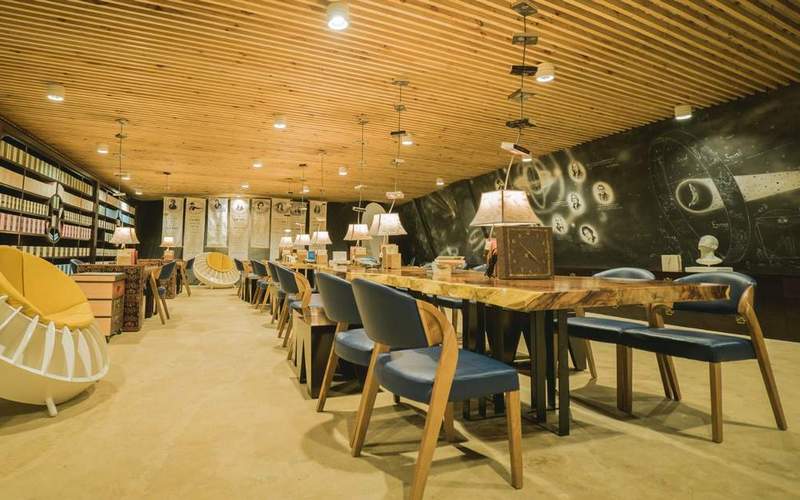
Dak Lak Museum of Ethnology
Dak Lak Museum of Ethnology is a place that should not be missed if you visit the Central Highlands. This museum preserves and presents the culture quintessence of ethnic minorities in the Central Highlands. The museum has more than 10,000 objects and receives about 100,000 visitors a year, one third of whom are foreigners.
Dak Lak Museum of Ethnology is located in the center of Buon Ma Thuot city. It was built on the grounds of the former residence of King Bao Dai, the last emperor of Vietnam, nearly 100 years ago. The main building of the museum has a simple architectural style but reflects the cultural identity of the Central Highlands. Surrounded by a shady garden, the museum looks like a Rong- a communal stilt house- or the long traditional house of the Ede. From afar, it looks like the traditional house of the M’Nong.
Formerly called the “Dak Lak traditional house”, it was officially renamed “Dak Lak Museum of Ethnology” in 1990 and renovated in 2008. The museum has three main sections featuring three different themes: the revolutionary traditions, natural features, and cultural characteristics of the ethnic minorities of the Central Highlands. The cultural space displays 520 objects representing cultural peculiarities of ethnic minorities like the Ede, M’Nong and Jarai. Installations and audiovisual gears introduce customs, festivals, and daily activities of local ethnic groups
Location: 02 Y Ngông Tân Tiến ward, Buon Ma Thuot city, Đắk Lắk province
Opening hour: 07.300 – 16.30 daily
Entrance: Adults: 30,000 VND
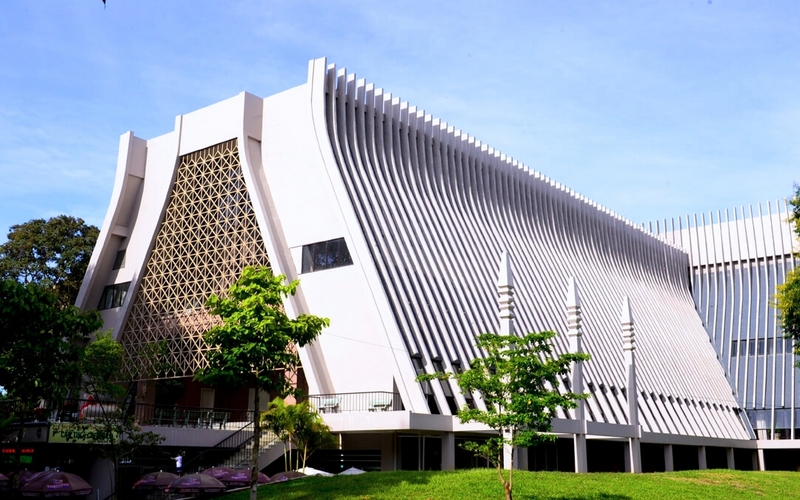
Southern Vietnam
Ho Chi Minh Museum of Fine Arts
The Ho Chi Minh City Museum of Fine Arts is a cultural gem nestled in the heart of Vietnam’s bustling metropolis. With a rich collection spanning from traditional to contemporary art, the museum showcases the artistic heritage of the country. From intricate sculptures to vibrant paintings, you can immerse yourself in the diverse and captivating world of Vietnamese art.
This museum displays works of art of both domestic and regional artists, as well as artifacts that hold crucial cultural and historical values and may reflect a whole period of Vietnamese history. The museum is divided into two main sections: with one focusing on old fine arts and the other exhibiting contemporary fine arts and handicrafts produced by some of the most outstanding artists in the country and region.
The building itself was erected and used as a residential house by Hui Bon Hoa, also known as Uncle Hoa, a Chinese settler in Vietnam before being converted into a museum by the authorities of Ho Chi Minh City in 1987.
Since then, it has played an important role in the preservation of Vietnamese arts and is an ideal place for arts lovers in the south of Vietnam. Recently, in an effort to provoke the love for fine arts of Vietnamese young people, many projects, mainly those related to photography, have been launched to draw the interest of young people and draw more young visitors to the museum. However, due to the construction of a mega-mall nearby, the building has severely deteriorated and some of its parts are being restored by the management
Location: 97A Pho Duc Chinh Street, Nguyen Thai Binh Ward, District 1, Ho Chi Minh City
Opening hour: 08.00 – 17.00 daily
Entrance: Adults: 30,000 VND; Students with student cards: 15,000 VND
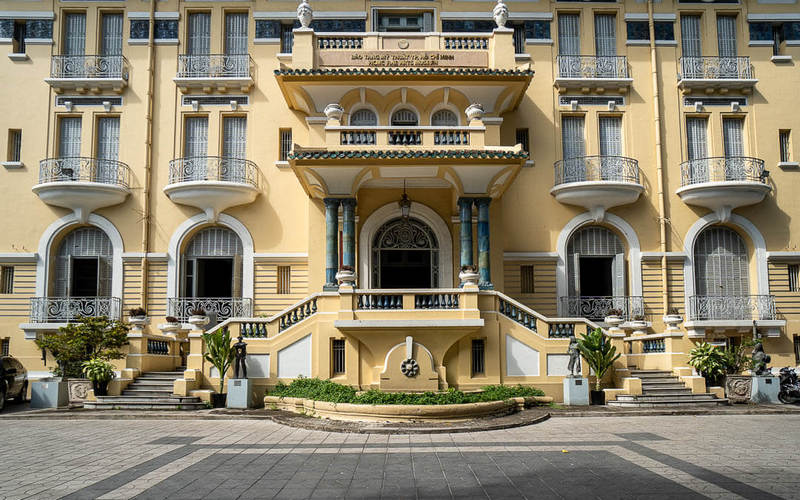
War Remnants Museum
The War Remnants Museum has remained the most visited museum in Ho Chi Minh City for years. With exhibitions and displays focusing on the Vietnam War, one of the most politically influential wars in modern world history, many visitors, especially those from Western countries, have flocked to the museum to learn more about how Vietnam managed to clinch a landslide victory over the US and the aftermath of this war.
Although the museum is not located within walking distance from Ben Thanh Market, you can still easily get there by bus or cab. It is only a 10-minute ride from Ben Thanh Market. Another option is to spend 10 minutes walking to the museum from the Independence Palace or Turtle Lake
There are eight sections in the War Remnants Museum. Upon arrival at the museum, you will immediately see the section “The world supports Vietnam in its resistance”, which talks about how countries around the world rallied against the French colonisation of Vietnam and the American intervention in Vietnam.
On the upper floors, you will get to see the artefacts, including bombs, weapons like guns and knives, and photos and information about military campaigns and attacks. The exhibition on the aftermath of the Agent Orange legacy is a must-see section. You will get to know more about the severe impacts of this chemical substance on human health and even see human remains affected by Agent Orange.
Location: 28 Vo Van Tan, In District 3, Ho Chi Minh City
Opening hours: 8:00AM – 5:00PM
Entrance: 40,000VND
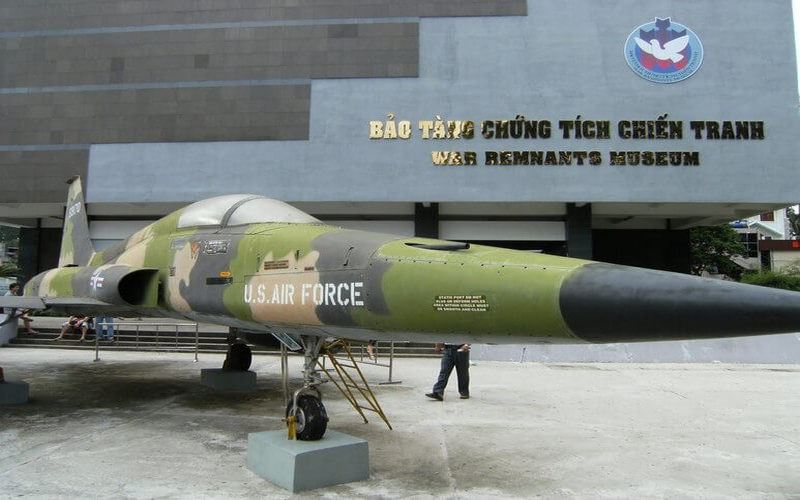
WONDER of Trip Planning? We are here to assist you
CUSTOMIZE HANOI PRIVATE TOURS & TRAVEL TAILOR – MADE BY OUR LOCAL EXPERTS
START PLANNING YOUR INCREDIBLE HANOI DAY TOURS & PACKAGES NOW
Tours You May Also Like
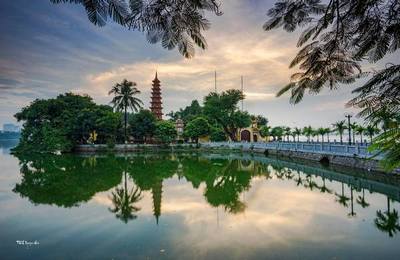
Hanoi City Tour Full Day
Duration: 8 hours
From $ 35/person
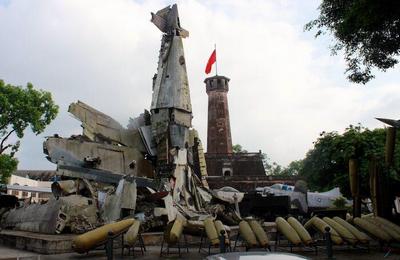
Hanoi Military Tour half day
Duration: 4 hours
From $ 29/person
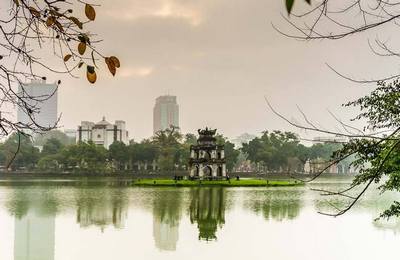
A Glimpse of Hanoi – Private Family Tour 4 days
Duration: 4 days
From $350/person
Share This Post
Facebook
Twitter
Linkedin
Pinterest
Telegram
Envelope
Reddit
